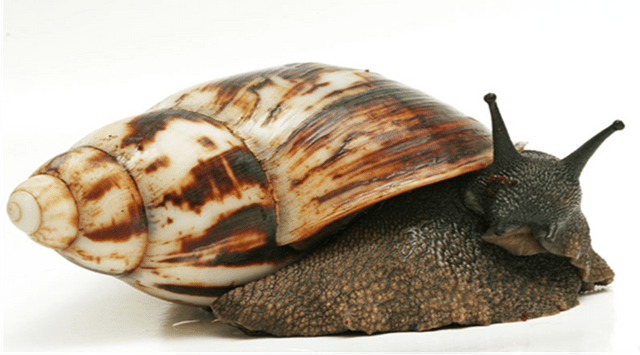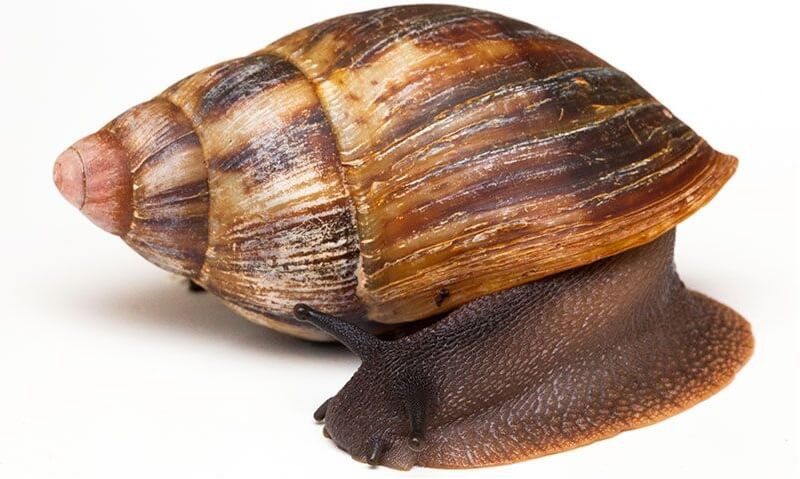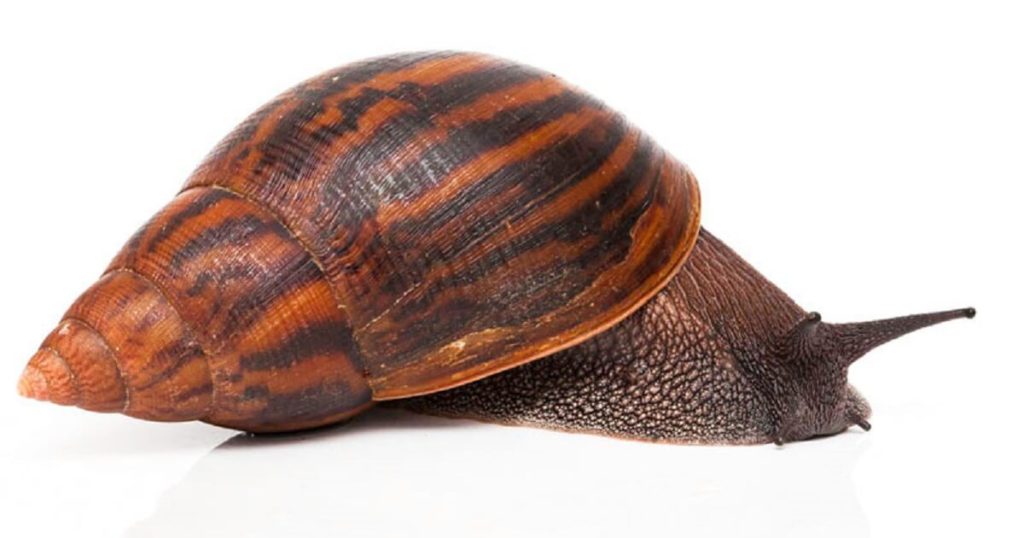This post talks about the types of snails that are more suited for commercial production in Africa to mark the beginning of the series that will discuss in detail snail production and marketing.
Types of snail
We move straight to discussing the 3 major types of snails.
Read also: Successful Snail Farming for Export and Local Market; All you need to know
1. Achatina Marginata
The giant West African snail, or banana rasp snail (Archachatina marginata) is a species of air-breathing tropical land snail. They can grow up to 20 cm long, and live up to 10 years. The natural spread of this species is very slow. However, unintentional spread by individuals for food and folk medicine is very common.

2. Achatina Fulica
Achatina fulica is a species of large land snail that belongs to the family Achatinidae. It is also known as the African giant snail, giant African snail, or giant African land snail. It shares the common name “giant African snail” with other species of snails such as Achatina achatina and Archachatina marginata.
This snail species has been considered a significant cause of pest issues around the world. Internationally, it is the most frequently occurring invasive species of snail.
Outside of its native range, this snail thrives in many types of habitats in areas with mild climates. It feeds voraciously and is a vector for plant pathogens, causing severe damage to agricultural crops and native plants. It competes with native snail taxa, is a nuisance pest in urban areas, and spreads human disease. This snail is listed as one of the top 100 invasive species in the world.

3. Achatina Achatina
Achatina achatina, commonly known as the Giant Ghana African snail, also known as the Giant African snail, giant tiger land snail, and gigantocochlea, is a species of very large, air-breathing land snail, a terrestrial pulmonate gastropod mollusk in the family Achatinidae. The name “Achatina” is from “achates”, Greek for agate. It shares the common name “giant African snail” with other species of snails such as Achatina fulica and Archachatina marginata.
It survives in a more humid environment. Achatina Achatina is the most preferred by farmers because it grows and can grow so big.

The Benefits of Snail Farming
- It is very stress-free to run.
- It is very productive and cost-effective.
- It is responsive to the environment.
- They are profitable.
- Snails have less fat and cholesterol.
- They are used for health-related products and are highly medicinal.
- Snails have traditional healing benefits.
- It is a very good export opportunity.
- They contain nutrients like iron, vitamin A, calcium, and magnesium and have very low fat.
Reference


